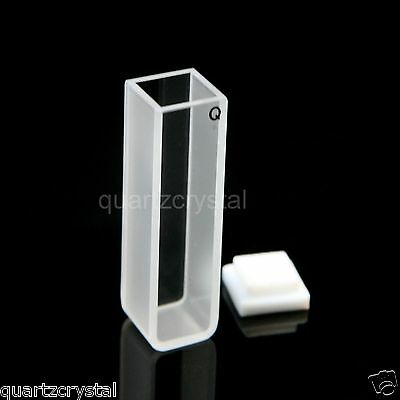-40%
Spectronic Instruments Standard Set 10 piece 333150 Milton Roy Thermo Scientific
$ 263.47
- Description
- Size Guide
Description
MORE ABOUT THIS ITEMCheck the performance and accuracy of your spectrophotometer right in your own lab. Simply insert standards into your spectrophotometer's cell holder. Standards include:
0% transmittance: the opaque 0%T standard is used to test for light leaks in your spectrophotometer.
Wavelength 590 nm: the wavelength accuracy standard has a transmittance peak near 515 nm which is certified as a wavelength accuracy standard and is NIST traceable. The symmetry of the peak means that the tests of wavelength accuracy are independent of the spectral bandwidth (up to 20 nm) of the instrument being tested. In addition, the testing peak of 515 nm is located at that point when the tungsten lamp shows the flattest energy measurement in response to wavelength change.
Stray radiant energy: each of these three standards is essentially opaque at its test wavelength and highly transmitting at longer wavelengths. The test wavelength is chosen (220 nm, 340 nm, and 400 nm) to correspond to points of low energy for both tungsten and deuterium lamps, readily revealing any stray energy for both the visible and UV regions.
Photometric performance: these 10% T and 50% T neutral density filters test spectrophotometric accuracy, precision, and linearity. No spectral bandwidth is required. The control standard verifies that the holder itself does not affect the 100%T reading.
Optical alignment: optical alignment in the sample compartment can be evaluated by using the control standard and photosensitive paper. The paper records the position of the light beam in the cuvette holder.
Check the performance and accuracy of your spectrophotometer right in your own lab. Simply insert standards into your spectrophotometer's cell holder. Standards include:
0% transmittance: the opaque 0%T standard is used to test for light leaks in your spectrophotometer.
Wavelength 590nm: the wavelength accuracy standard has a transmittance peak near 515 nm which is certified as a wavelength accuracy standard and is NIST traceable. The symmetry of the peak means that the tests of wavelength accuracy are independent of the spectral bandwidth (up to 20 nm) of the instrument being tested. In addition, the testing peak of 515 nm is located at that point when the tungsten lamp shows the flattest energy measurement in response to wavelength change.
Stray radiant energy: each of these three standards is essentially opaque at its test wavelength and highly transmitting at longer wavelengths. The test wavelength is chosen (220 nm, 340 nm, and 400 nm) to correspond to points of low energy for both tungsten and deuterium lamps, readily revealing any stray energy for both the visible and UV regions.
Photometric performance: these 10% T and 50% T neutral density filters test spectrophotometric accuracy, precision, and linearity. No spectral bandwidth is required. The control standard verifies that the holder itself does not affect the 100%T reading.
Optical alignment: optical alignment in the sample compartment can be evaluated by using the control standard and photosensitive paper. The paper records the position of the light beam in the cuvette holder.











